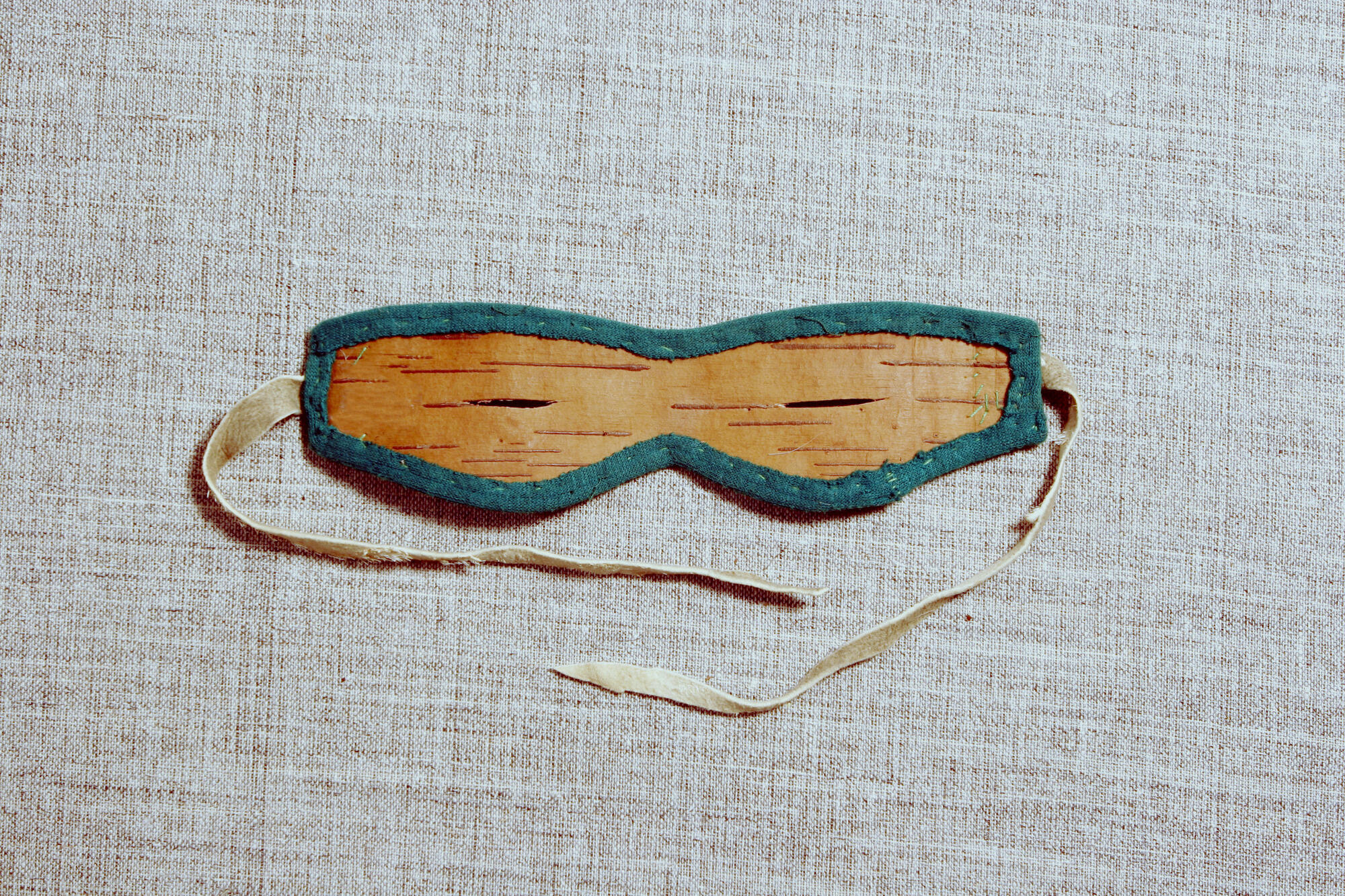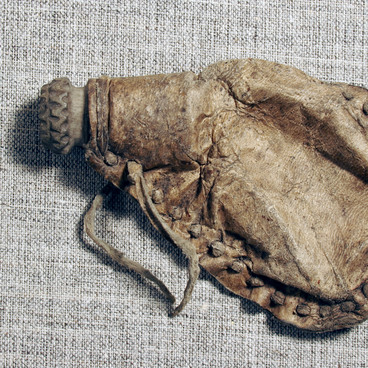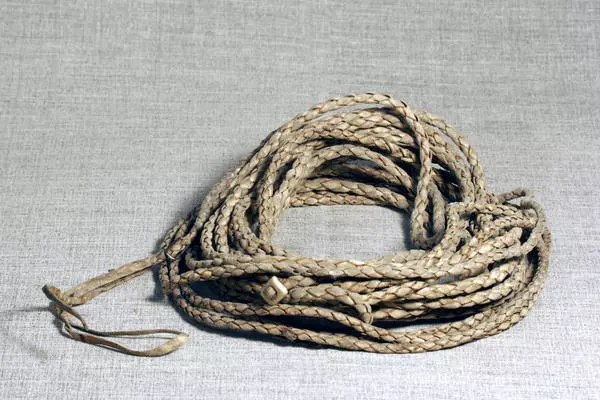Today the NEnets still use the same type of sunglasses that was invented about two thousand years ago. It was the Northern peoples who first learned how to protect their eyes from excessive sunlight. From the old times, they handmade sunglasses of available natural materials for this.
Everyone who has been in the Tundra or the Arctic shores in early spring knows how blindingly bright the snow under the sunrays is, how difficult it is to do without sunglasses in April and May here. Indigenous peoples of the North use traditional sunglasses (sometimes called snowglasses in literature) to prevent snow blindness. There’s no glass or any other transparent material in its construction. They protect the eyes in another way: there are narrow and long holes for eyes, so narrow that they significantly reduce the bright stream of light coming from spring sunlit snow and ice. The Tundra inhabitants make sunglasses of reindeer skin or the upper layer of birch bark. Edges are covered with cloth or hare or squirrel fur. They are fixed at the back of the head with reindeer skin strings. Blanks are usually cut out fitting the form of its future owner’s face.
These protective glasses are worn tight to the face, so that the light only penetrates through the holes cut for the eyes. Slots are that narrow not only to reduce the amount of perceived light but also to improve the eyesight. The wider the slots are, the large is the field of vision. Despite many Forest Nenets wear manufactured sunglasses today, traditional snowglasses are still in use.
The glasses displayed in the ethnographical exposition of Gubkinsky Museum of the Development of the North were provided by the Forest Nenets Vladimir Pyak, a Dyanki-Koy camp resident. They are made of birch bark and edged with green cloth. Like other colors by the Forest Nenets, this color has a specific meaning, the green is the color of grass, spring and summer, awakening to life.
Everyone who has been in the Tundra or the Arctic shores in early spring knows how blindingly bright the snow under the sunrays is, how difficult it is to do without sunglasses in April and May here. Indigenous peoples of the North use traditional sunglasses (sometimes called snowglasses in literature) to prevent snow blindness. There’s no glass or any other transparent material in its construction. They protect the eyes in another way: there are narrow and long holes for eyes, so narrow that they significantly reduce the bright stream of light coming from spring sunlit snow and ice. The Tundra inhabitants make sunglasses of reindeer skin or the upper layer of birch bark. Edges are covered with cloth or hare or squirrel fur. They are fixed at the back of the head with reindeer skin strings. Blanks are usually cut out fitting the form of its future owner’s face.
These protective glasses are worn tight to the face, so that the light only penetrates through the holes cut for the eyes. Slots are that narrow not only to reduce the amount of perceived light but also to improve the eyesight. The wider the slots are, the large is the field of vision. Despite many Forest Nenets wear manufactured sunglasses today, traditional snowglasses are still in use.
The glasses displayed in the ethnographical exposition of Gubkinsky Museum of the Development of the North were provided by the Forest Nenets Vladimir Pyak, a Dyanki-Koy camp resident. They are made of birch bark and edged with green cloth. Like other colors by the Forest Nenets, this color has a specific meaning, the green is the color of grass, spring and summer, awakening to life.




